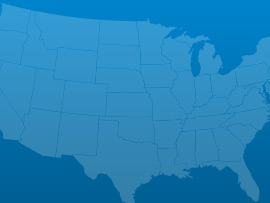D.C.’s wastewater system dates back to 1810 and includes 1,800 miles of sanitary and combined sewers—a longer distance than from D.C. to Denver. The system includes 16 stormwater stations, 75,000 catch basins and manholes, and 9 wastewater pumping stations. The advanced treatment system at Blue Plains is the largest of its type in the world, in-taking on average 330 million gallons per day (MGD), including from outlying counties, with a capacity of 384 MGD, the equivalent of 560 Olympic swimming pools. A third of the city is served by combined sewers, which can result in sewage overflows into the region’s rivers during
high rain events. DC Water’s Clean Rivers Project, planned in the early 2000s and in construction since 2011, is working to reduce such overflows by, among other things, building 18 miles of new tunnels to store water during high rain events.
 Bridges
Bridges Drinking Water
Drinking Water Energy
Energy Levees
Levees Rail
Rail Roads
Roads Schools
Schools Solid Waste
Solid Waste Transit
Transit Wastewater
WastewaterA: Exceptional, B: Good, C: Mediocre, D: Poor, F: Failing, ?: Incomplete
Each category was evaluated on the basis of capacity, condition, funding, future need, operation and maintenance, public safety, resilience, and innovation
Bridges
21 of the 252 bridges are structurally deficient
Bridges
$26.1 million in bridge funds came from the Federal Highway Bridge Fund in 2011
Drinking Water
$1.6 billion in drinking water infrastructure needs over the next 20 years
Hazardous Waste
8 sites on the National Priorities List
Inland Waterways
10 miles of inland waterways, ranking it 39th nationally
Levees
2 miles of levees
Ports
100 thousand short tons of cargo in 2012, ranking it 44th nationally
Public Parks
$11.6 million of unmet needs for its parks system
Rail
3 freight railroads covering 19 miles across the state, ranking 49th nationally by mileage
Roads
$425 million a year in costs to motorists from driving on roads in need of repair, which is $1,061 /yr per motorist
Roads
298 of the state’s 1,502 public roads are major roads, and 95% are in poor condition
Transit
418.1 million annual unlinked passenger trips via transit systems including bus, transit, and commuter trains
Wastewater
$2.5 billion in wastewater infrastructure needs over the next 20 years

March 03, 2017
As the President’s repeated in his address to Congress his pledge to dramatically increase infrastructure spending to the tune of $1 trillion, various Congressional Committees

March 01, 2017
On Tuesday night, President Trump addressed a joint-session of Congress for the first time in his presidency. Infrastructure was among the many issues he discussed.

February 28, 2017
U.S. motorists set a new record for vehicle miles travelled (VMT) in 2016, driving over 3.2 trillion miles, an increase of 70 billion miles from

February 17, 2017
Romantic dates, the Grammy awards and celebrating black history are not the only milestones of this week; the Oroville dam crisis in California and the